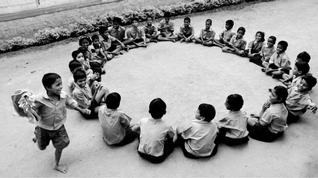
With not much time left for the full roll-out in the implementation of the Right
of Children to Free and Compulsory Education (RTE) Act, 2009, weaker sections
and minorities continue to be at a disadvantage. Enrolment figures show a slight
slump over last year, even as only less than one child in hundred of entry-level
school going age remains out of formal schooling, according to the latest
District Information for School Education (DISE).
The latest DISE figures suggest that the number of children enrolled in
government primary schools has dropped by 21 lakh between 2009-10 and 2010-11,
while there has been an increase of 11 lakh in enrolment in private schools.
The biggest decline in government primary school enrolment has been reported in
Jammu & Kashmir, Jharkhand, Kerala, Maharashtra, Rajasthan, Uttarakhand, Uttar
Pradesh and Tamil Nadu. On the other hand, States like Punjab have shown an
increase of 70,000 students in government primary schools. Manipur and Mizoram
also show an increase.
Even in Delhi, which saw a rise in enrolment in both government and private
primary schools, the preference was clearly for the private. While enrolment in
government schools increased by about 14,000, the increase in private school
enrolment was about 30,000.
a
This decline in enrolment in government schools could partly be explained by the
decline in the percentage share of government schools in the total schools—from
80.37 per cent in 2009-10 to 78.15 per cent in 2010-11, even though roughly
16,000 new government schools have been set up in the year. Interestingly, the
share of private schools in the total schools continues to hold steady at 19.4
per cent.
The DISE statistics for year 2010-11, released by the National University of
Educational Planning and Administration (NUEPA), shows that while enrolment of
students belonging to the Scheduled Castes has been stagnant, the enrolment of
students from Scheduled Tribes declined from 11 per cent last year, to 10 per
cent in 2010-11; and that of Other Backward Classes from 42 per cent to 40 per
cent.
In what could be a setback to the UPA Government’s claims in implementing the
recommendations of the Sachchar Committee Report on Social and Educational
Status of Muslims, DISE statistics reveal a decline in enrolment of Muslim
children from 13.02 per cent to 12.50 per cent in 2010-11 over 2009-2010.
Taken together, the increase in total enrolment in elementary education from
98.28 per cent in 2009-10 to 98.89 per cent in 2010-11 on the one hand, and the
decline in enrolment of children belonging to the weaker sections and minorities
on the other, could mean that the benefits of RTE are not reaching the
educationally backward sections of society to the extent they ought to.
On the infrastructure front, however, there are noteworthy achievements in most
respects, barring a few, perhaps due to the continuous monitoring by the Apex
Court. For instance, availability of drinking water facility in primary schools
has increased from 87.77 per cent in 2008-09 to 92.71 per cent of schools in
2010-11; and for all schools up to elementary level from 85.33 per cent to 91.12
per cent in the same period. Similarly, the number of schools with common
functional toilets has come down from 66.84 per cent to 43.21 per cent of
primary schools and 62.81 per cent to 45.21 per cent of all schools, the decline
being attributed to segregation of girls’ and boys’ toilets. Similarly, the
number of un-electrified schools and schools without playgrounds has also
declined over the period.
One glaring lacunae in schooling efforts continues to be in respect of ‘Children
with Special Needs’; only 5.02 lakh of whom are enrolled which constitutes a
meagre 0.26 per cent of the total enrolment and what is more, according to DISE,
only half of the 1.5 million elementary schools have provided barrier free
access through ramps for these children. “Having ramps does not make a school
accessible by itself, as it does not help a child with hearing and visual
impairment. The HRD ministry officials need to sit together to make all schools
barrier-free for all kinds of disabilities and special needs”, says Javed Abidi,
convenor of Disabled Rights Group.
The retention rate at primary level has dropped from 74.01 to 73.42 per cent
even as transition from primary to upper primary level has increased from 83.53
to 85 per cent. This needs introspection as to why efforts at enrolment are
wasted by preventing drop out at primary level when there is no detention policy
under RTE.
